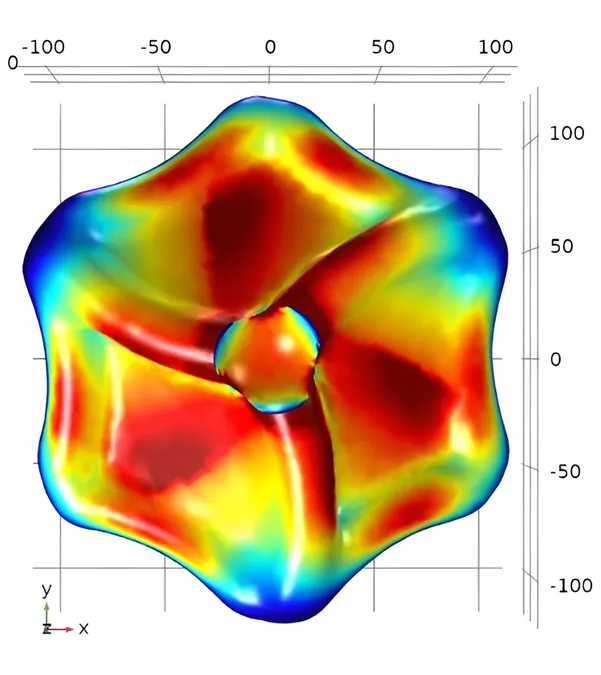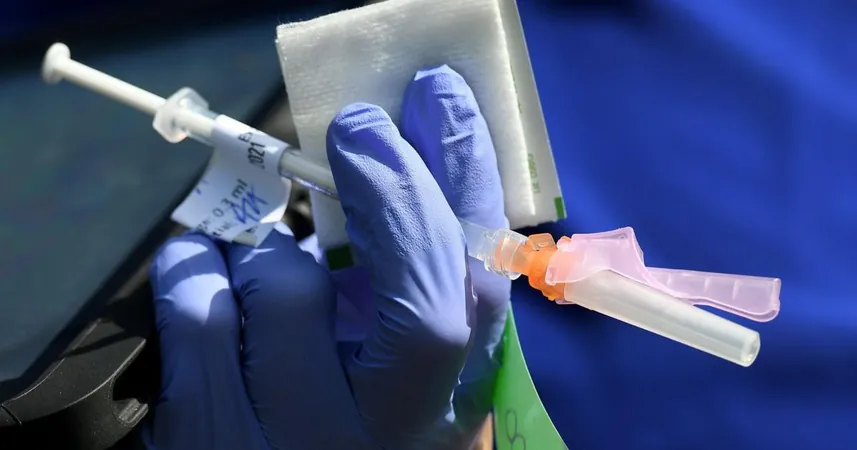
Groundbreaking eDNA Technology Revolutionizes Monitoring of Marine Life and Invasive Species in the Southern Ocean
2024-10-06
The Southern Ocean is undergoing significant changes, and a recent advancement in DNA technology is set to enhance our understanding of these vital marine ecosystems. Scientists are harnessing environmental DNA (eDNA) to monitor marine life and detect non-native species in the Antarctic region, marking a game-changing development in marine research.
In 2019, during a 3,000-nautical-mile expedition aboard the former Australian icebreaker Aurora Australis, researchers meticulously collected 138 seawater samples. Their goal? To analyze the eDNA present in these samples to gain insights into the variety of zooplankton—tiny marine animals inhabiting these waters.
Dr. Leonie Suter, a molecular geneticist with the Australian Antarctic Division, led a team that compared species discovered through eDNA with those obtained via a traditional method known as the Continuous Plankton Recorder (CPR). The CPR, operational since 1991, has provided a valuable long-term dataset that allows researchers to track changes in Southern Ocean zooplankton diversity. However, it is limited in that it primarily captures robust organisms like crustaceans, whereas fragile species often succumb to damage.
"With eDNA, we can identify nearly everything in the environment, from scarce fragments to waste, eggs, or larvae," Dr. Suter shared, reiterating the potential of this innovative method.
The outcomes were astounding. The research team, spearheaded by former Curtin University researcher Georgia Nester, who currently collaborates with the Mindaroo Foundation, found eDNA capable of detecting 68 zooplankton species, whereas CPR identified only 32 species. Shockingly, only 12 species were common between the two approaches, primarily consisting of crustaceans like krill and copepods.
The complementary nature of these methods is crucial. "Using both eDNA and CPR provides a richer perspective on zooplankton diversity and shifts, helping us discern patterns we might otherwise overlook," Dr. Suter noted. For instance, as climate change leads to rising ocean temperatures, certain gelatinous organisms may thrive while crustaceans decline, a phenomenon that could be missed without the broader spectrum provided by eDNA analysis.
The research did not stop there; it also uncovered 16 non-native or potentially invasive species, primarily in waters closer to Tasmania. Notably, this increase was observed when the team entered sea ice, suggesting that organisms from the ship's hull could have been released during this phase. While hull biofouling poses a recognized risk for marine species transfers to Antarctica, eDNA detections were comparably low, indicating they might consist of non-viable DNA or remnants of dead organisms.
In response to biosecurity concerns, Kirsten Leggett, Environmental Manager at the Australian Antarctic Division, emphasized that the new icebreaker, RSV Nuyina, is equipped with a comprehensive biofouling management plan aimed at minimizing the transport of non-native species. This initiative adheres to international biofouling guidelines and involves collaboration with authorities and subject matter experts to uphold stringent biosecurity standards within the Australian Antarctic Program.
Dr. Suter advocates for the continued application of eDNA technology, particularly for monitoring biosecurity risks in fragile Antarctic ecosystems. She argues that future research must focus on improving detection methods for non-native species promptly—a challenge made feasible by eDNA.
In summary, the integration of eDNA methodologies alongside traditional surveys will yield a nuanced understanding of Southern Ocean ecosystems, which is essential for gauging the impacts of environmental changes. A study detailing these findings has been published in the journal Science of the Total Environment, paving the way for transformative strategies in marine conservation and monitoring.
This innovative research exemplifies how advanced genetic technologies can safeguard our oceans and help preserve the delicate balance of marine biodiversity in the face of growing threats from climate change and invasive species.









 Brasil (PT)
Brasil (PT)
 Canada (EN)
Canada (EN)
 Chile (ES)
Chile (ES)
 España (ES)
España (ES)
 France (FR)
France (FR)
 Hong Kong (EN)
Hong Kong (EN)
 Italia (IT)
Italia (IT)
 日本 (JA)
日本 (JA)
 Magyarország (HU)
Magyarország (HU)
 Norge (NO)
Norge (NO)
 Polska (PL)
Polska (PL)
 Schweiz (DE)
Schweiz (DE)
 Singapore (EN)
Singapore (EN)
 Sverige (SV)
Sverige (SV)
 Suomi (FI)
Suomi (FI)
 Türkiye (TR)
Türkiye (TR)